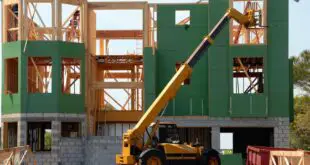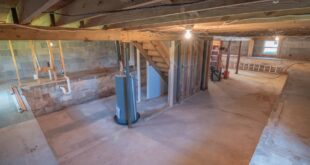When looking to have your attic space converted, it’s important to get things right from the get-go to avoid delays or even worse, unexpected additional work that will cost you even more.
In this blog, we’ll look at some common loft conversion hold-ups and how to ensure you avoid them in the first place. Let’s go!
Trying To Go DIY
Okay, it is technically possible and legal to do most of the work yourself, but that’s only if you have the right skills and knowledge.
While it may be tempting to convert your attic space DIY and save plenty of money in the process, unless you really know what you’re doing and are prepared for any eventuality, it could go totally awry.
Therefore, in the vast majority of cases, it really is best to go with the professionals. After all, if you get it wrong when converting your loft DIY, you could end up.
Rushing Into the Project and Choosing the First Quote
It’s best to obtain a minimum of three quotes from various professionals/companies so that you can weigh up several options. This is a smarter approach than simply going with the first contractor or company you find in your area who can convert your attic space.
Once you’ve received 3+ quotes, you’ll be able to compare each option. You’ll want to consider factors such as their level of experience and any online reviews or ratings they have from previous customers.
The cost of loft conversion is one thing, but ultimately, you want to go with who offers the best value for money. That said, it’s also worth considering who you think you’ll get on with well when choosing the right person/company for the job.
Suitability
Before hiring a professional to design your future loft conversion, it’s important to take time to ensure that your loft is suitable. While you may need to hire a professional to verify this, you may be able to rule it out with your own measurements.
For example, loft conversions require a height of at least 2.2 meters. Specific building regulations must be followed too. Notably, since properties constructed post-1960s have a higher chance of featuring a roof truss (as opposed to a framed roof), these households may need structural support for a loft conversion to take place.
While 2.2 meters is the minimum headspace needed, really you’d want about 2.8 meters of head space since the flooring, insulation and floor finish also need to be taken into account.
To perform a head height measurement of your loft space, measure from the highest point of your attic to the top of the floor joist below. The highest point will most likely be the underside of the middle ridge timber. If in doubt about any aspect of the process, you should hire a professional. They will need to verify these measurements before your loft conversion can be brought to life anyway.
It should be noted that there are loft conversions that allow for more head height to be added. Therefore, it may be possible that insufficient head height will not automatically rule out a loft conversion as a possibility. For example, designs such as mansard roof conversions may add height.
Not Considering Planning Permission or Building Regulations
You might assume that an attic conversion falls under permitted development (i.e., no planning permission required). However, this is not always the case.
While planning permission shouldn’t be required for a relatively straightforward conversion, more complex designs will often need planning approval. For example, large modular loft conversions (and others that change the appearance of the building) will likely require planning approval.
Moreover, for those located in a designated area (e.g., a conservation area), planning permission will likely be a requirement. If in any doubt, contact your local council to find out whether or not your proposed loft conversion will need planning permission. Be sure to make the request once all relevant details of the proposed conversion are in place.
Along with planning permission, it’s important to make sure that building regulations are not overlooked. You’d need to especially pay attention to this if you were to undertake any of the DIY work.
Otherwise, it should be dealt with by the professional you hire. Of course, that is one of many reasons why it’s important to hire a suitable and qualified professional when having your loft space converted. You can consult with a loft conversion company, builder or architect for more details. Of course, if hiring a loft conversion company to perform the work, you could ask them about adhering to building regulations before the process gets underway.
Leaving Your Insurance Provider In The Dark
It’s important to let your insurance provider know that you intend to have your loft converted. This way you can find out whether or not the work will be covered by the building regulations. If it is not covered, you could look into another option, such as specialist insurance. That way, if anything goes awry when the loft is being converted, you’ll be insured.
Once the work is complete, inform your insurance provider either way so that they can update these key details to have an accurate picture of your property. For many reasons, it is important to keep your insurance provider informed when building work is being completed on your property, such as a loft conversion.
 Being Human
Being Human





Diviashop simplifies business setup for non-USA/UK residents by offering legal USA LLC or UK LTD formation, business bank accounts, and seamless payment gateway integration. A complete solution to start and grow your global business remotely!